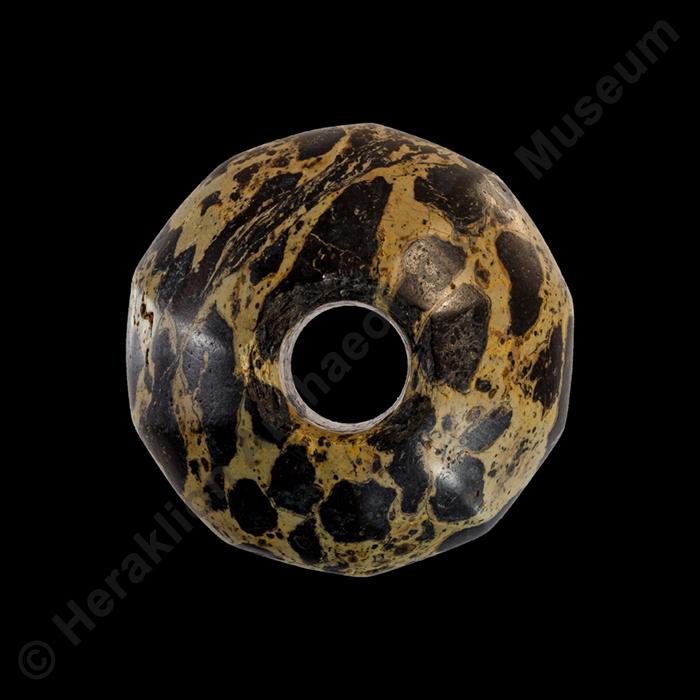Stone Mace
Λ1549
Stone (Breccia)
Intact
Diameter: 5.00 cm.
Knossos
Isopata, Mace-Bearer's Tomb (Tomb 3)
Late Bronze Age. Final Palatial period, Late Minoan ΙI period.:
1450-1400 BC:
Gallery:
XCase:
104Exhibition thematic unit:
Late Bronze Age - Neopalatial period (1700-1450 BC) - Final Palatial period (1450-1300 BC).The cemeteriesThe cemeteries of Knossos
Description
Breccia mace with two disc-shaped ends and central shaft hole. Found in the “Mace-bearer’s Tomb” at Isopata in Knossos. Stone maces carried a religious symbolism in Minoan Crete, as they did in Egypt and Syro-Palestine. They are often depicted in Minoan iconography, while three similar examples have been found in the Treasury of the Shrine of the palace of Zakros. However, maces or similar implements are rarely deposited in Minoan tombs. One example of a stone hammer-axe comes from an important Neopalatial rock-carved tomb excavated in Poros, Heraklion. The Isopata mace is one of many heirlooms of the Neopalatial period accompanying burials in that cemetery as prestige items. This practice may have been intended to express a special connection with the past and its continuity in the Final Palatial period.Bibliography:
Evans, A. “The Tomb of the Double Axes” and associated group, and the Pillar Rooms and Ritual Vessels of the “Little Palace” at Knossos”. Archaeologia 65 (1914): 14-18. Preston, L., “The Isopata Cemetery at Knossos.” Annual of the British School at Athens 102 (2007): 266-261, 271?273.Author:
G. F.Photographs' metadata
